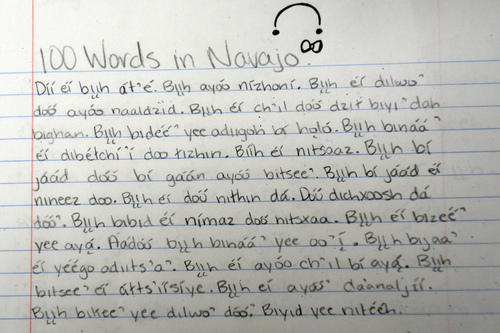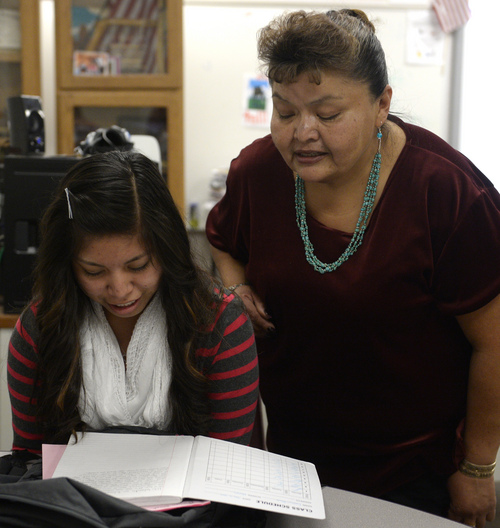This is an archived article that was published on sltrib.com in 2014, and information in the article may be outdated. It is provided only for personal research purposes and may not be reprinted.
Editor's note: This story accompanies a look at efforts to transform Monument Valley High School. Read the main story here.
Dorothy Bigman, one of Monument Valley High's first graduates, now teaches its students the Navajo language using the tribe's wealth of games and songs.
After one class, in which three girls play a shoe game against three boys, Bigman teaches a class with just two students: Caitlyn Black and Richelle Sloan.
Black reads aloud a story she has written in Navajo about a big, strong deer. She says she wants to master her native language so she'll be more valuable in the health care industry.
"They'll want Navajo speakers to translate," says Black, a junior who hopes to attend the University of Utah and eventually become a pediatrician. She speaks Navajo with her grandmother at home.
Monument Valley High also has a Navajo culture teacher, and a hogan beside the school provides a traditional space for ceremonies, such as when a medicine man sought healing for a teacher seriously injured in a collision last fall.
Each summer, the school hosts 'Ndahoo'ahh, a two-week cultural program showcasing Navajo crafts.
Bigman graduated from Monument Valley in 1985, two years after the school opened, and returned as a teacher 16 years ago after earning bachelor's and master's degrees in education.
Even students such as Sloan, who didn't earn Navajo while growing up in Tuba City, Ariz., pick up the language fast, says Bigman.
Sloan, a senior, came to Monument Valley to live with the family of her boyfriend a year ago, after their son was born.
His parents insisted she learn Navajo, and she's happy they did.
"It's part of us," she says. "When you speak Navajo, you feel whole, like part of you is not missing."





